Ten villages to visit in Trentino-Alto Adige
1. Castelrotto
It is located in a scenic area of great value, within the Schlern Nature Park and on the slopes of the Seiser Alm, a circumstance that has made Castelrotto (Kastelruth in German) a summer and winter resort. However, it is also a place rich in history, whose origins go back to the 10th century: long a fief of the Counts of Tyrol, Castelrotto experienced a period of great development at the time when it began to be considered a tourist center, that is, at the end of the 19th century. As a result, the town is rich in Art Nouveau buildings, but not only: characteristic are the facades painted by the painter Eduard Burgauner, a native of Castelrotto, who left many of his works on the walls of town buildings in the late 19th and early 20th centuries. His works include the decoration of House Thurn-Edenberg, which preserves a medieval interior. Lovers of tradition can visit the Costume Museum in the central Krausen Square: many traditional Tyrolean costumes are on display here.
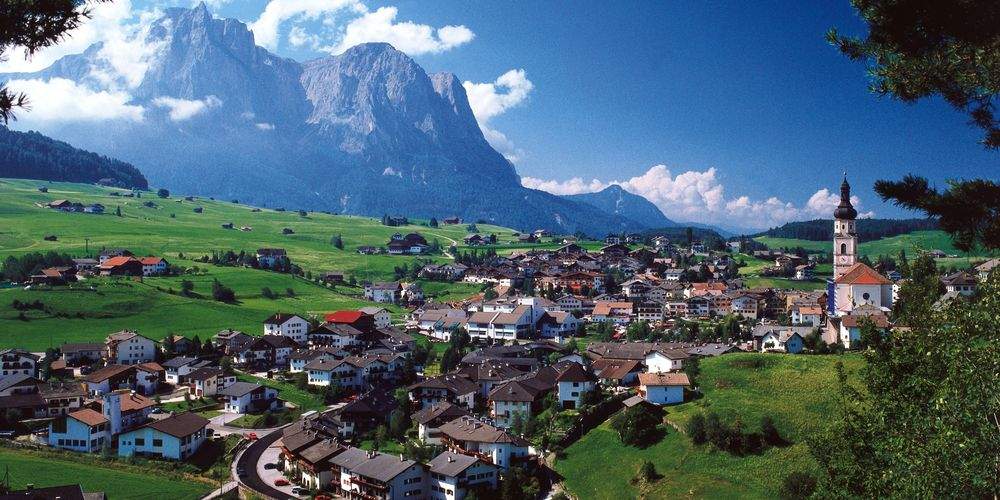 |
| View of Castelrotto |
2. Sterzing
Vipiteno (Sterzing in German) lies at an altitude of almost 1,000 meters, a short distance from the Austrian border (it is closer to Innsbruck than to Bolzano) and has origins in Roman times, but it developed at the time of the barbarian invasions: however, the first attestation of the toponym “Stercengum” is from 1180. A place of passage, it flourished between the 15th and 16th centuries, a period to which many of its major monuments date, beginning with the 15th-century parish church of Our Lady of the Marsh. Older, however, is the Gothic Church of the Holy Spirit, dating from the late 14th century, just as does the Town Hall. The symbol of Sterzing, however, is the Tower of Twelve (Zwölferturm), also dating from the 15th century. Sterzing, like other towns in South Tyrol and the Tyrol, is known for the Krampus parade, which takes place on December 5, the evening of St. Nicholas: figures disguised as devils run through the streets of the city, starting furious fights against anyone who comes within their reach (so if you are not used to this kind of folklore...best to turn away).
 |
| The center of Sterzing |
3. Kaltern on the Wine Road
In German it is Kaltern an der Weinstraße and is located near Lake Kaltern in the Oltradige, one of the most beautiful landscape areas in the region. The village developed mainly in the 16th century, and the buildings, as in many towns in South Tyrol, have features that are typical of both the Gothic style developed in Germanic countries and the Italian Renaissance. The symbol of the village is the parish church of Santa Maria Assunta, with its very tall bell tower (it is 72.5 meters high), while sights include the ruins of St. Peter’s basilica (it is located outside the center), and the remains of the castles on the hills surrounding Caldaro. The lake is a destination for frequent nature walks.
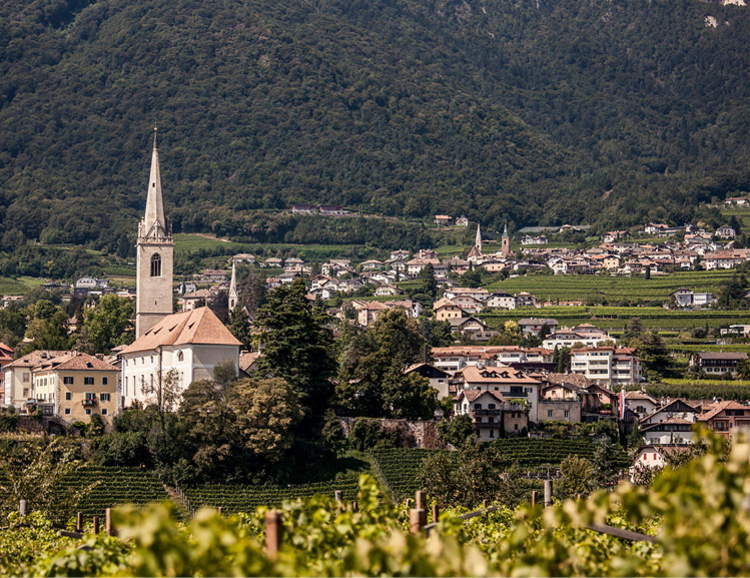 |
| View of Caldaro on the Wine Road |
4. Vigo di Fassa
A hamlet of San Giovanni di Fassa, it is now considered primarily a popular ski and winter sports resort, but the hamlet has its origins in the Middle Ages, and here is one of the oldest buildings in the Fassa Valley, the church of San Giovanni, which dates perhaps from the 10th century but is now in its Gothic appearance, with its tall spired bell tower (the interior, however, contains 16th-century frescoes). Similar in appearance is the church of Santa Giuliana, peculiar in that it is isolated from the village, on a hill, surrounded by verdant woods: today’s appearance is 15th-century. Vigo di Fassa is also home to the Ladin Museum: the village is in fact at the center of the Ladin community, and the museum displays the collections of the Istitut Cultural Ladin, which tells the history and traditions of this population. The hamlet’s other museum is the “Monzoni” Mineralogical Museum, which is strong with a large collection of local minerals.
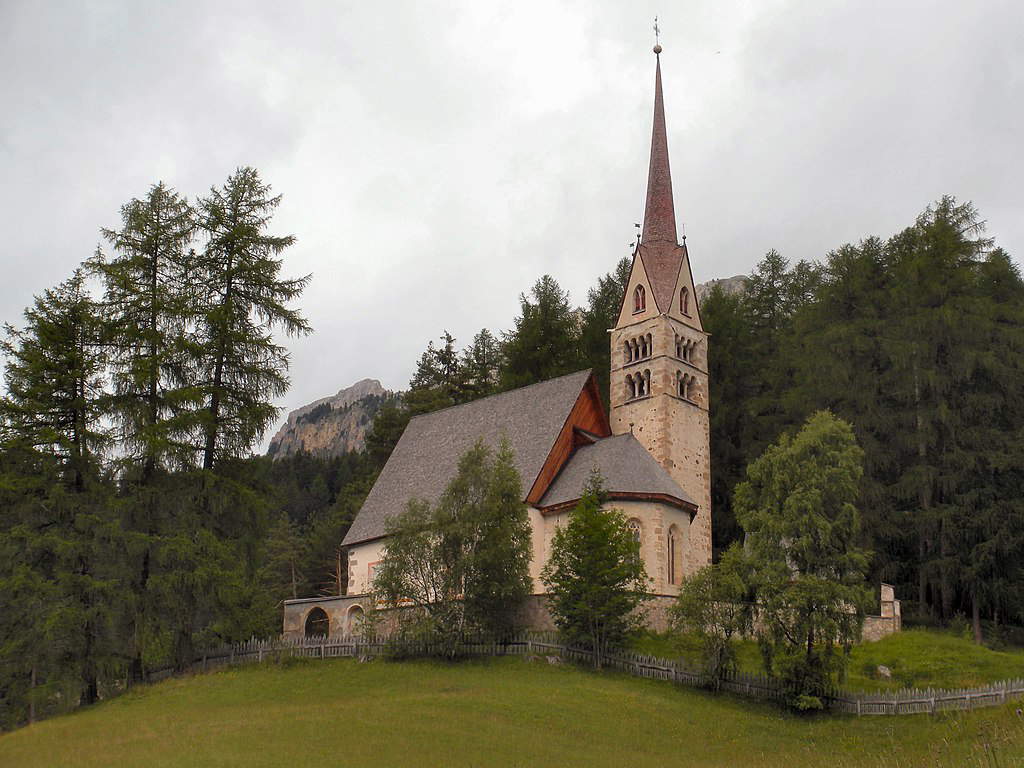 |
| Vigo di Fassa, church of Santa Giuliana |
5. Riva del Garda
This is the main town on the Trentino shore of Lake Garda and the second largest on the lake after Desenzano del Garda. Riva del Garda was inhabited as early as Roman times, was later owned by the Goths, then by the Scaligeri of Verona, the Visconti of Milan, and was then fought over by the Venetians and the prince-bishops of Trent, although the Venetians prevailed and radically renovated the town in the 16th century. It was then part of the Austro-Hungarian Empire, a period during which Riva del Garda began to develop the tourist vocation that it maintains to this day. Although, therefore, the center flourished in the 19th century, there is no shortage of fine old buildings, such as the church of the Inviolata, with its Baroque decoration inside, or the 18th-century church of Santa Maria Assunta. Older still are the 14th-century Palazzo Pretorio, the former seat of authority, and the Rocca di Riva, a medieval-era fortress that has been remodeled several times over the centuries and is now home to the MAG - Museo Alto Garda, which houses an archaeological section, a historical section (with a narrative that starts from prehistory and reaches World War II) and an art gallery with paintings by important authors. The MAG also has a branch in nearby Arco, where it houses a permanent exhibition dedicated to the great Giovanni Segantini, a native of Arco itself.
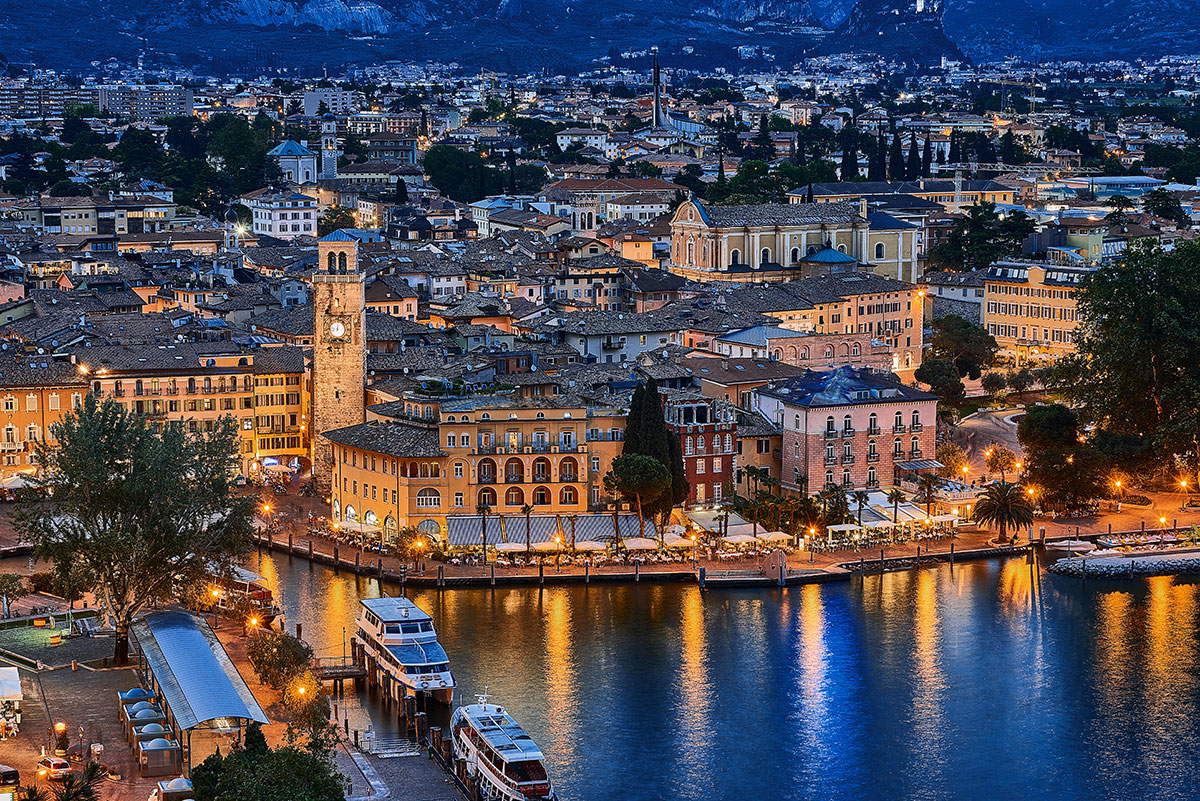 |
| View of Riva del Garda |
6. Naturno
Naturno (Naturns in German) is one of the main towns in the Vinschgau Valley and its origins date back to the Middle Ages, when it is first attested as Nocturnis in 1158. Naturno is home to the church of St. Prokulus, which dates back to the 8th century and is famous because it houses one of the best-preserved Carolingian-era decorative cycles in existence (and consider that Carolingian frescoes are themselves a rarity): these are scenes that tell the life of St. Prokulus and are among the most studied in medieval art. The church also has 13th-century frescoes. Naturno is also home to the medieval Juval Castle, which dates back to the 13th century: today it is one of the six sites of the Messner Mountain Museum, the mountain museum circuit opened by the famous mountaineer Reinhold Messner (the main site is in Bolzano, the others are in Solda, on Monte Rita, in Brunico and on the Plan de Corones).
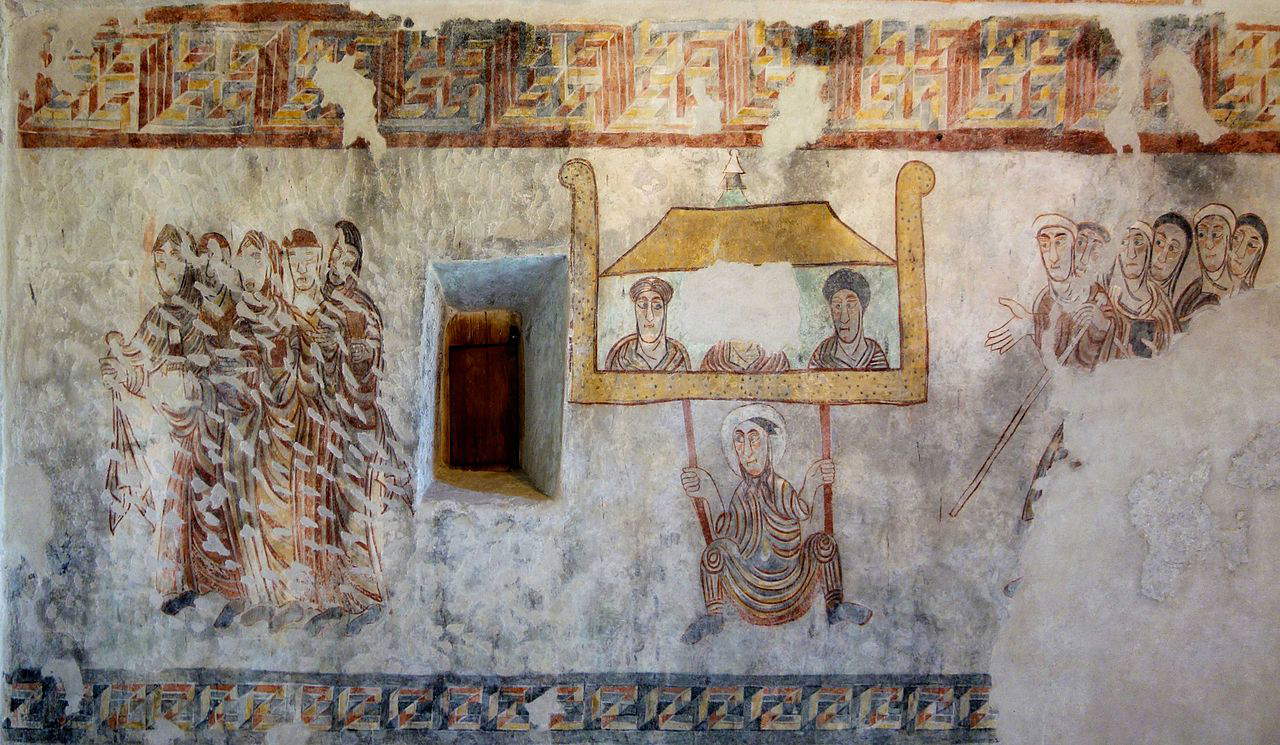 |
| The Carolingian frescoes of Naturno |
7. Egna
It is located in the plain south of the city of Bolzano and has medieval origins: its German name, Neumarkt (literally “new market”), which was given to it in the 14th century, attests to the town’s mercantile vocation, at the center of commercial trade. The most distinctive sign of its centuries-old tradition are the numerous arcades(Lauben) that line the streets of the market town. Egna is also the town where South Tyrolean patriot Andreas Hofer was imprisoned, who in 1809 spearheaded the Tyrolean Uprising against Napoleonic France, which ended, however, in failure: imprisoned in Egna, Hofer was later executed in Mantua. Worth seeing, in addition to the arcaded streets, are the Romanesque St. Nicholas Church and the Museum of Popular Culture.
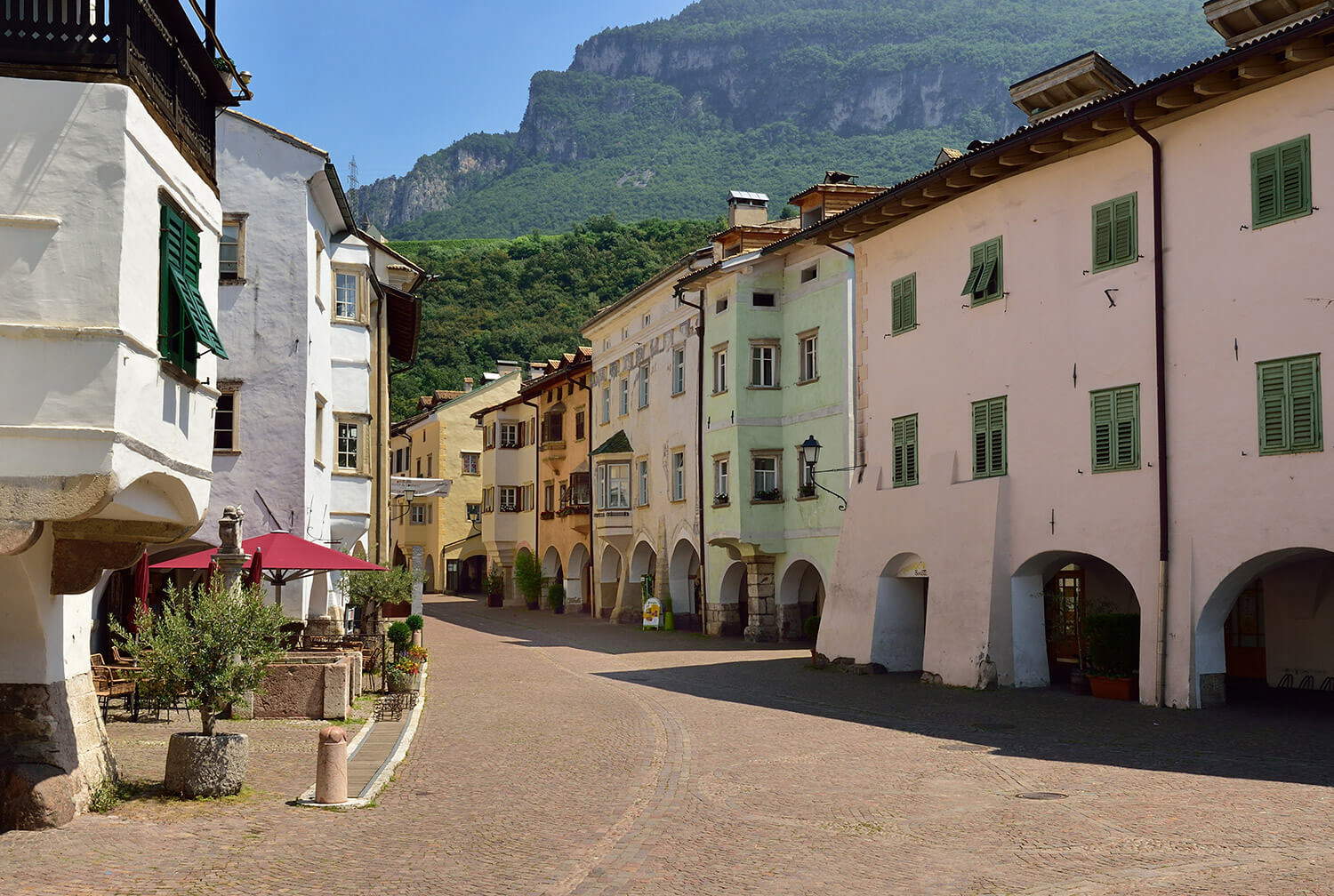 |
| The arcades of Egna |
8. Ortisei
This is the most populous center in Val Gardena, attested since the 13th century (the town’s name comes from the Latin urticetum, “place of nettles,” while in German it is Sankt Ulrich): the neoclassical parish church is dedicated to the patron saint, St. Ulrich. Outside the center is the quaint St. James Church, a curious example of a church remodeled in the 17th century in a style reminiscent of the late Gothic (there are 15th-century frescoes inside). Ortisei is also home to the Val Gardena Museum, which chronicles the history and traditions of the area. Val Gardena is also famous for its skiing: major international competitions are also held here.
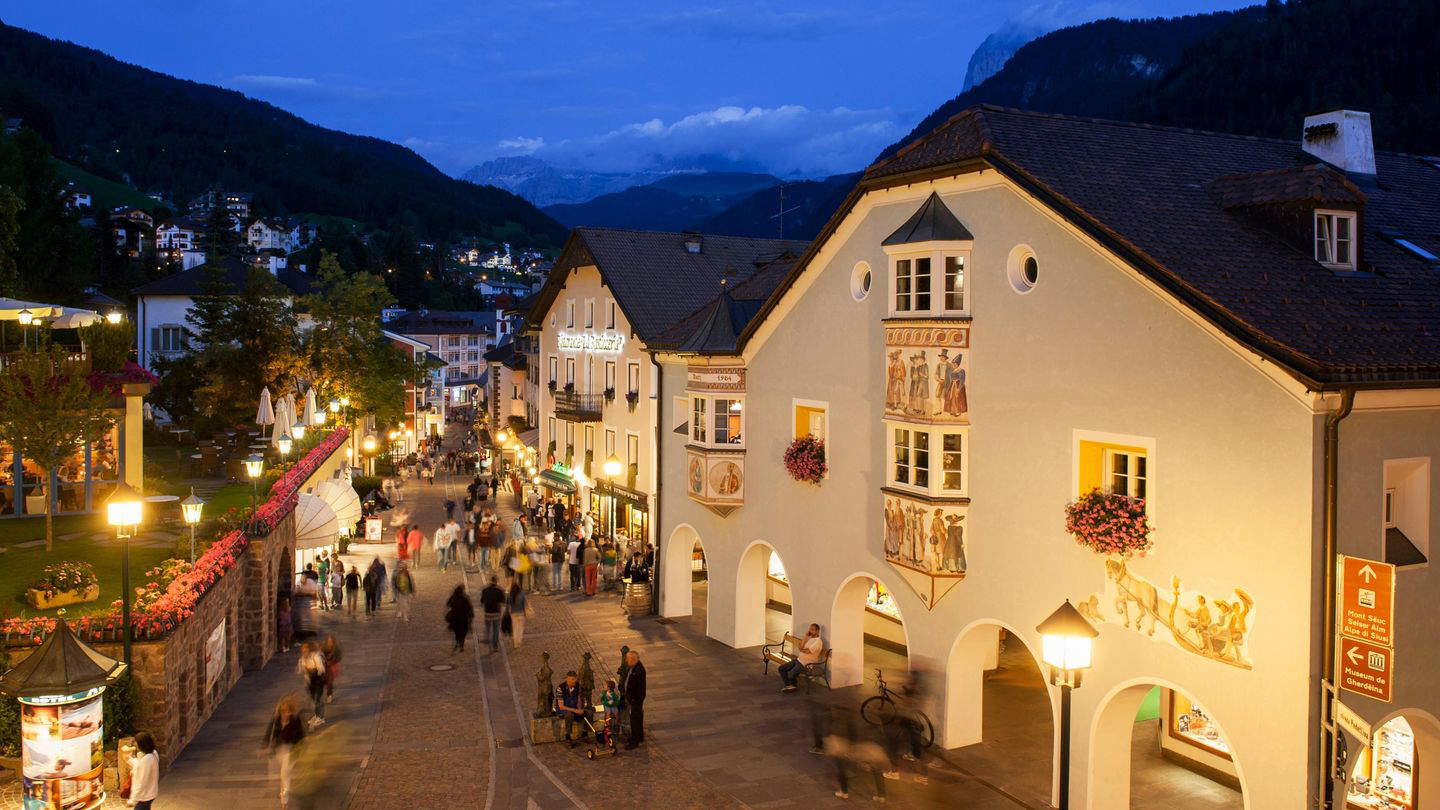 |
| The center of Ortisei |
9. Molveno
Lying on the shores of the lake of the same name, nestled among the peaks of the Dolomites, near the Paganella massif, Molveno began to become a popular tourist destination in the 19th century, and has attracted illustrious guests: politicians, rulers, writers, scientists, and intellectuals. The settlement has Roman origins, but it developed in the Middle Ages when, given its strategic location, the village was contested for centuries. The main monuments include the medieval church of San Vigilio (the portal lunette, frescoed, is very special), the 16th-century Venetian sawmill, and the Austrian fortifications on the mountains.
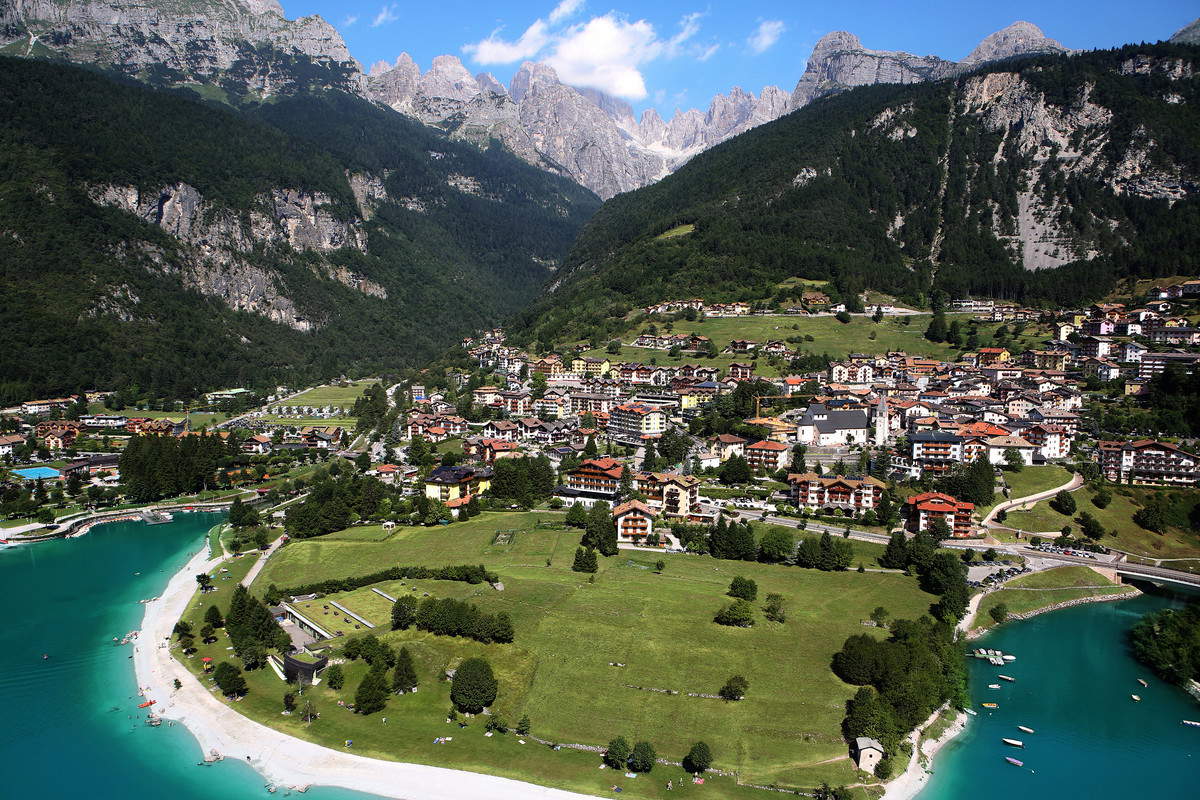 |
| View of Molveno. Ph. Credit Fabio Mori |
10. Glorenza
First mentioned in 1163 as Glurnis (hence the German name Glurns), in the Middle Ages it was at the center of trade and had considerable development under the Counts of Tyrol, but was razed to the ground in 1499 by the Swiss during the Engadine War: it was then rebuilt and walled at the behest of Emperor Maximilian I (the walls are still preserved intact). Not far from the Swiss border, and among the main centers of the Vinschgau, it has many ancient relics: beyond the walls, see Castel Glorenza (a 16th-century nobleman’s residence), the town gates, frescoed houses and, outside the center, the 15th-century church of San Pancrazio.
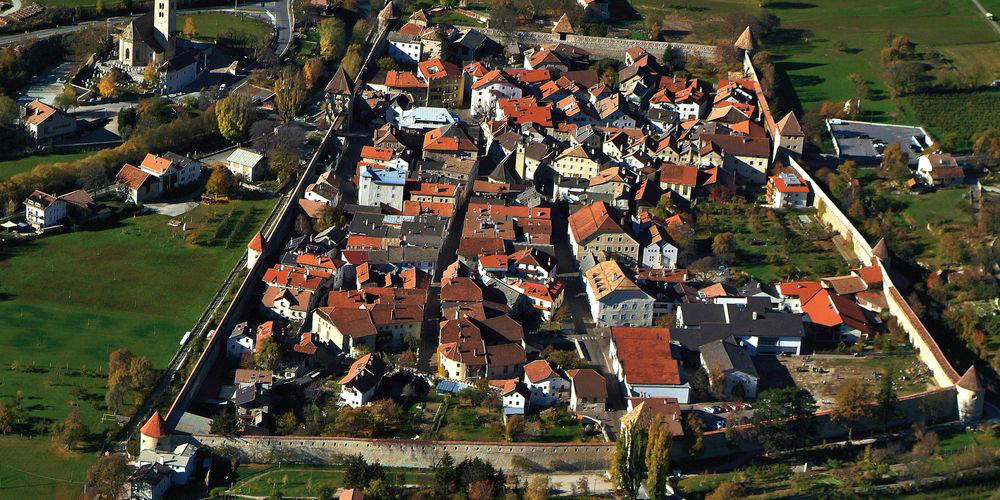 |
| View of Glorenza |
 |
| Ten villages to visit in Trentino-Alto Adige |
Warning: the translation into English of the original Italian article was created using automatic tools. We undertake to review all articles, but we do not guarantee the total absence of inaccuracies in the translation due to the program. You can find the original by clicking on the ITA button. If you find any mistake,please contact us.


























